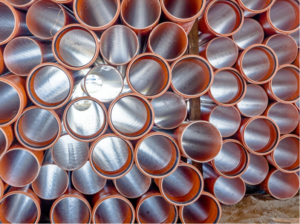Robotics scientists have made great strides in developing sensors that can sense changes in position, pressure, and temperature, all of which are important for technologies such as wearables and human-robot interfaces. The advantage of human perception is the ability to perceive several stimuli at the same time, and robotics also strives for this.
Jamie Paik and his colleagues from the Reconfigurable Robotics Lab (RRL) at the EPFL School of Engineering have developed a sensor that can sense combinations of bending, stretching, compression and temperature changes, thanks to a concept that uses colors.
RRL’s technology, called ChromoSense, is based on a translucent rubber cylinder containing three sections colored red, green and blue. An LED at the top of the device sends light through its core, and when the device is bent or stretched, changes in the light’s path through the colors are detected by a miniature spectrometer at the bottom.
“Imagine drinking three different flavored drinks through three different straws at the same time: the proportion of each flavor changes as you bend or twist the straw. This is the same principle used by ChromoSense: it senses changes in the light passing through the straw as the geometry of these sections deforms,” Paik said.
The thermosensitive section of the device also allows for temperature changes to be detected using a special dye – similar to color changing t-shirts or mood rings that change color when heated.
Paik explains that while robotic technologies that rely on cameras or multiple sensing elements are effective, they can make wearable devices heavier and clumsier, and require more data processing. “For soft robots to better serve us in our daily lives, they need to be able to sense what we’re doing,” he says.
“Traditionally, the fastest and cheapest way to do this is through vision-based systems that record everything we do and then extract the data we need. ChromoSense enables more targeted and information-dense reading, and the sensor can be easily incorporated into different materials for different tasks.”
Thanks to its simple mechanical structure and the use of colors above the cameras, ChromoSense can offer low-cost mass production.
In addition to assistive technologies such as exosuits that encourage movement, Paik sees everyday applications for ChromoSense in sports equipment or clothing that could be used to provide feedback to users about their form and movements.
ChromoSense’s strength—its ability to sense multiple stimuli at once—may also be its weakness, as decoupling the simultaneously applied stimuli is still a challenge that researchers are working on. Paik says they are currently focusing on improving the technology to sense the forces applied on the spot or the precise boundaries of the material as it changes shape.
“If ChromoSense gains popularity and a lot of people want to use it as a general-purpose robotic sensor solution, I think further increasing the information density of the sensor could become a really interesting challenge,” he says.
“With our technology, any object can become a sensor as long as light passes through it,” Paik noted.
Source: Science Daily

